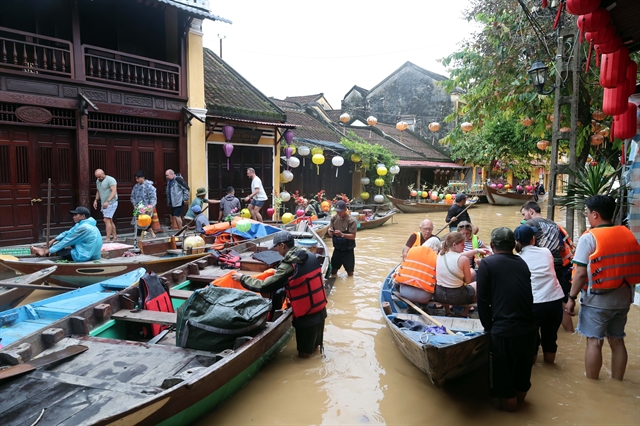 Society
Society

 |
| Hà Nội's Cát Linh-Hà Đông Urban Railway was put into operation in 2021. –VNA/VNS Photo |
HÀ NỘI – The Politburo of the Party Central Committee has called for continued investment in building urban railways and subways in Hà Nội, HCM City and other large cities.
The exhortation comes in its recently issued Conclusion No. 72-KL/TW on implementing Resolution No. 13-NQ/TW passed by the Party Central Committee in 2012 on building infrastructure to make Việt Nam a modern industrial country.
It requires Party committees, organisations, officials, and members to focus on implementing various tasks.
It sets a goal of having infrastructure appropriate for a developing but industrial country with high per capita income by 2030, and completing key and major national infrastructure projects that connect the country with the region and world.
By 2045 it expects the country to have a modern infrastructure system commensurate with that of developed, high-income countries.
The Politburo wants policies and laws urgently reviewed, amended and promulgated for developing infrastructure associated with modern industry by 2030, especially for public investment, planning, public-private partnerships, the Government budget, and the development of digital infrastructure, the economy and a digital society.
It seeks research into and trialling of models such as public investment - private management and private investment - public use, the transportation on demand (TOD) urban development model for public transport and building a financial mechanism for cultural and social infrastructure projects.
The conclusion states the necessity of steady investment in large-scale urban railways and subways in Hà Nội, HCM City and other cities.
According to traffic experts, urban railways not only help reduce congestion and pollution but also promote socio-economic development along the routes.
Dr Nguyễn Xuân Thuỷ, former director of the Transport Publishing House, said when Hà Nội’s urban railway network is completed, the ratio of the population expected to use it would increase to 35-45 per cent while the number using private vehicles would fall to 30 per cent.
Ten lines are planned to be built with a total length of 410km.
In HCM City, eight lines will be built connecting its centre with a total length of 173km.
But construction progress has been slow in both cities.
According to a report from the Ministry of Transport, as of October last year only 13km of urban railways had been built in the country, or 10.4 per cent of the total length envisaged by 2020.
This means the target of subways meeting 15-20 per cent of transport demand in Hà Nội and HCM City was not met.
In Hà Nội, the Ministry of Transport and city People's Committee have invested in four lines.
Only route No. 2A between Cát Linh and Hà Đông is in operation.
Phase 1 of the route No. 1 section between Yên Viên and Ngọc Hồi has completed technical design that used capital from Japanese official development assistance (ODA).
Line No. 3’s section between Nhổn and Hà Nội Station is expected to be ready by mid-2024, and its Cầu Giấy – Hà Nội Station section in 2027.
Railway line No. 2’s section between Nam Thăng Long and Trần Hưng Đạo is being tweaked.
HCM City plans to build eight metro and three monorail lines with a total length of around 220km at a cost of US$25 billion.
Work is underway on subway lines Nos 1 and 2 from Bến Thành to Suối Tiên and Tham Lương with a total length of more than 30km. They are also funded by ODA money.
Work on the remaining routes has yet to start.
The Politburo also requires prioritising of investment to complete the North-South Expressway, east-west expressway axis and its multi-modal connection routes, international airports, infrastructure for large ports and inland waterways, the North-South high-speed rail project, and the Lào Cai - Hà Nội - Hải Phòng; Lạng Sơn - Hà Nội; Móng Cái - Hải Phòng; HCM City - Cần Thơ; Biên Hòa - Vũng Tàu; and Thủ Thiêm - Long Thành rail routes. VNS




.jpg)